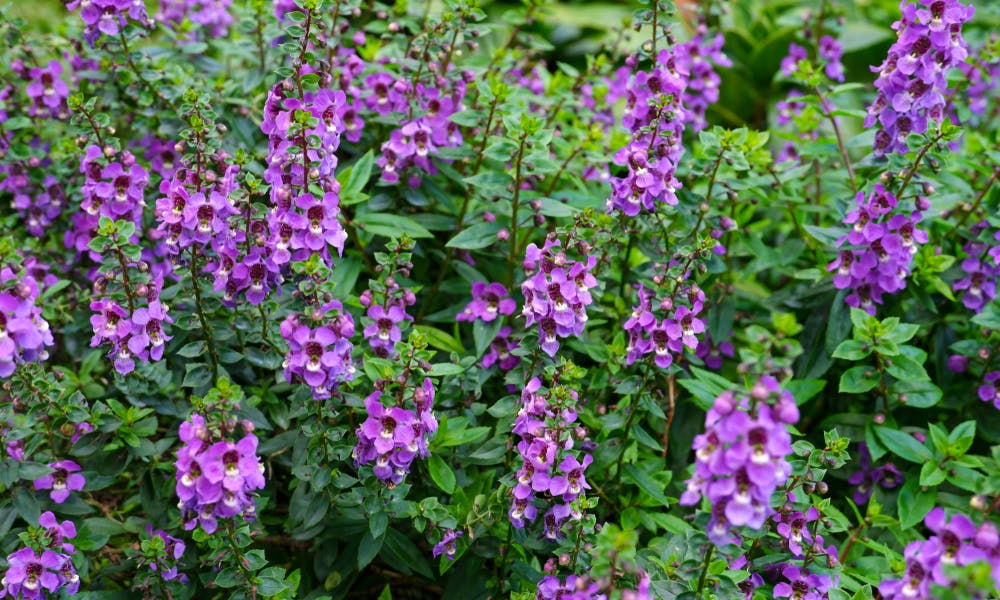Purple flowers are a popular feature in both gardens and landscaping. Purple flowers come in different shades and tones, from vivid violets, magentas, to soft lilacs. Purple has long been associated with royalty, pride, and success, and they no doubt bring that regal feel to your garden.
Purple flowers symbolize royalty, demand respect, and designates elegance. They can also symbolize a mystic journey and enlightenment in Eastern cultures and religions such as Buddhism. The presence of purple flowers in a room improves mood, and some have healing properties, as in the case of Verbena. Lavender has a mosquito-repelling ability.
This article will provide further you with information on the following:
• The Names and Details of Purple Flowers
• Popular Purple Flowers That Can Add Richness To Your Garden
• Purple Flowers To Grow Within Your Home Space
• Flowers That Combine With Purple Flowers
• Fragrant Purple Flowers
The Names and Details of Purple Flowers
There’s an abundance of purple flowers on earth, all with different hues, some with fragrance and others without, but they all are elegant and lively. Below are some purple flowers.
* African Lily
Scientific Name: Agapanthus Orientalis.
This flower blooms between Mid-Summer to Early fall on a biennial plant. It is also popularly called Lily of the Nile.
* Alpine Betony
Scientific Name: Campanula portenschlagiana.
Also known as lamb’s ear, the alpine betony is a beautiful perennial plant that blooms in the summer.
* Aconitum
Scientific Name: Aconitum napellus.
Popularly known as wlf’s bane, blooms on this perennial plant appear during the mid to late summer.
*Bittersweet Nightshade
Scientific Name: Solanum dulcamara
Also referred to as felonwood and poison berry, bittersweet nightshade blooms between spring and fall.
*Basil
Scientific Name: Ocimum basilicum purpurascens.
The purple basil blooms annually between the mid to late summer.
*Butterfly Orchid
Scientific Name: Habenaria psycodes
Also called the poor man’s orchid, this is an annual plant blooming from summer to fall.
*Canterbury Bells
Scientific Name: Campanula medium
Popularly known as the blue bell, the plant blooms annually or biennially between late spring and midsummer.
Popular Purple Flowers That Can Add Richness To Your Garden
Here are examples of popular purple flowers to add richness to your garden
1. Lavender: The lavender is one of the most popular purple flowers, known for its soothing fragrance used in various beauty products.
2. Verbena: Verbena is a flower that blooms in the spring but is tolerant of droughts. Verbena is a symbol of healing and can soothe earaches.
3. Hydrangea: Hydrangeas are known to grow in areas with high humidity and hold a lot of water. The word hydrangea means a vessel of water in Greek.
4. Dwarf Iris: Dwarf iris is a fragrant flower with the structure of an iris, however, are purple.
5. Catmint: Catmint flowers come in other colors apart from purple and are sometimes used in place of lavenders when the lavender isn’t available.
6. Lilac: It’s popular in bouquets for its fragrance. Lilac flowers emerge in thick clumps.
7. Allium: Allium is Latin for garlic, and this is appropriate because of its distinct garlic smell.
8. Salvia: Salvia, also known as sage, is identical to the lavender, but lacks the lavender scent.
9. Wisteria: As a plant that grows in vines, growing wisteria is a beautiful sight to behold.
10. Pansy: The origin of the name pansy is from the French word “penser,” meaning “to know.
Purple Flowers To Grow Within Your Home Space
Despite being traditionally planted outdoors in gardens, flowers can be grown indoors. Due to the overall soothing effect of their color, purple flowers have become a popular type of indoor flower. Purple flowers give your space an overhaul and appeal. This is seen in the way lavender livens up your bathroom and gives it a pleasant scent.
The following purple flowers can be grown indoors and add some liveliness to your space.
1. Purple heart, also called the wandering jew, can be planted in ornamental flowerpots
2. Lavender: The lavender plant can be grown indoors, and it’s advised to plant it in terracotta pots to prevent the roots from rotting because of the nature of terracotta that allows water to be evaporated.
3. African Violets: In addition to purple, the plant comes in other colors such as white and blue. An excellent indoor plant, the plant needs just a little sunlight to bloom.
Flowers That Combine With Purple Flowers
Purple flowers can be grouped alone due to the wide range of hues. They are usually paired with yellow flowers to give a contrasting effect. The pansy is a flower that comes in the colors yellow and purple, and sometimes both colors are on a flower. This creates a pleasant contrast and is a great idea when combining flowers for a garden or in a flowerpot.
Purple flowers combined with Red Flowers are popular and can be used for a variety of occasions such as proms and weddings. A lovely red and purple flower combination is the arrangement of purple and pink roses.
Purple flowers can be combined with other colors such as white, green, and pink.
Fragrant Purple Flowers
1. Lavender: Popular for its fragrance, lavender is one of the most popular purple flowers.
2. Lilac: Lilac is a trendy purple flower, also known for its fragrance, which is described as a sweet, heady, and robust scent. It should be noted that not all lilacs are fragrant.
3. Heliotrope: This flower gives off an almond scent,
4. Scented Geranium: Popular for its various aroma, this plant gives off a minty, lemony, or even strawberry scent.
5. Purple Hyacinth: Hyacinths come in various colors and are beautiful with a sweet and intoxicating aroma.
6. Purple Rose: A scarce type of rose.
7. Passion Flower: The passionflower is an exotic flower with a gentle scent.
8. Verbena: Verbena is a flower with a citrus smell akin to a lemon.
9. Allium: Alliums are famous for their strong smell of onions or garlic.
